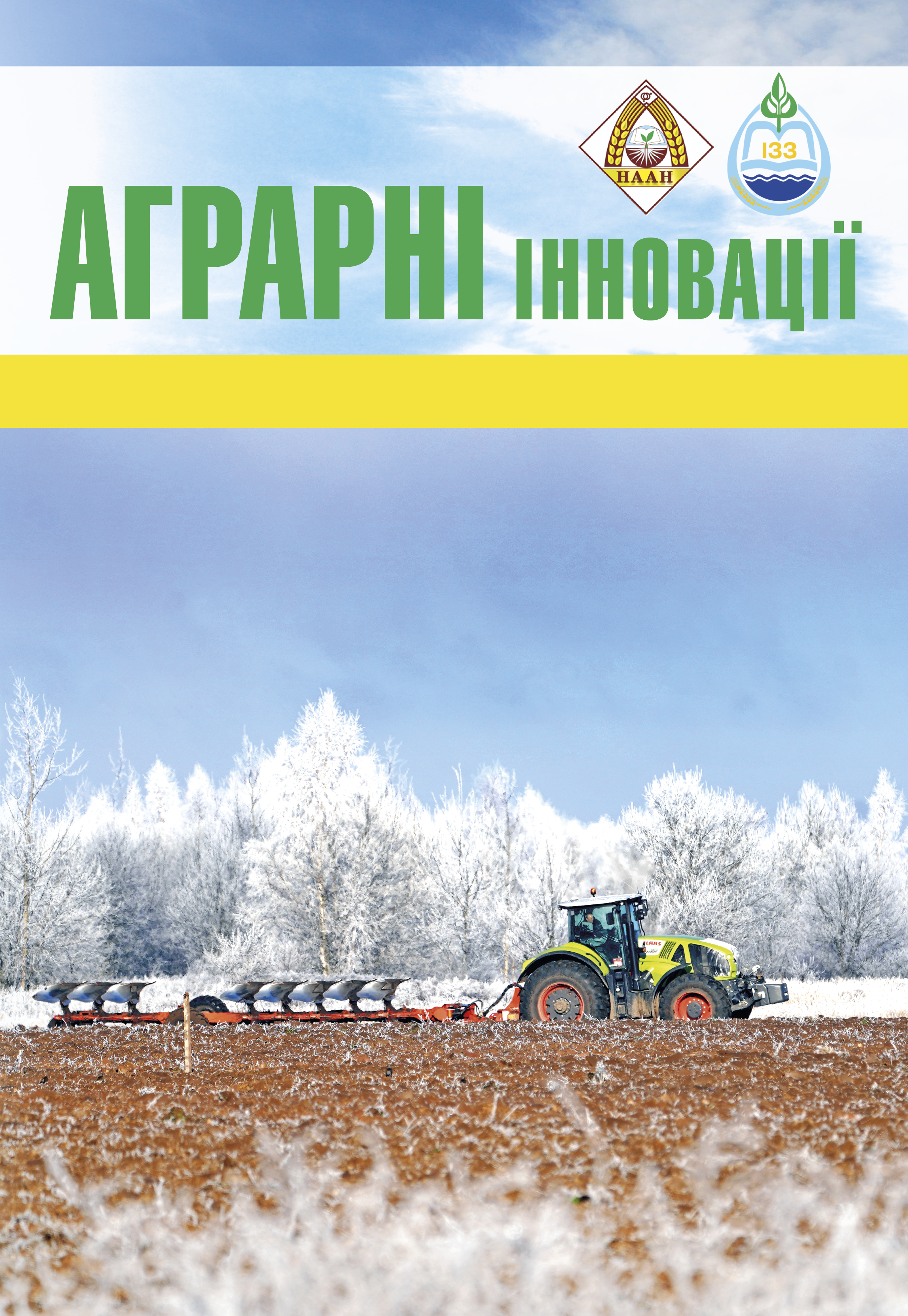Water consumption of spring wheat depending on farming and tillage systems in the Right-Bank Forest-Steppe of Ukraine
Abstract
The research of many scientists has established that the improvement of farming systems allows to accumulate moisture and preserve it in the soil and create conditions for its productive use by cultivated plants during the growing season. Therefore, the purpose of the conducted research was to determine the impact of three farming systems – industrial (control), ecological and biological and four options for primary soil tillage – plowing by 20–22 cm (control), chiseling by 20–22 cm, disking by 10–12 cm, disking for 6–8 cm on the reserves of productive moisture in the soil and its supply to spring wheat plants in the conditions of the Right Bank Forest Steppe of Ukraine. General scientific, laboratory and statistical methods were used for the research. As a result of the research, it was established that the years of the research were quite diverse in terms of moisture level and were characterized by an uneven distribution of GTK during the growing season of spring wheat. The researched farming systems and soil tillage had a significant impact on the reserves of productive moisture in the soil during the spring wheat sowing period, as well as on the total water consumption during the growing season of the crop and its water consumption coefficient. The analysis of the obtained data allows us to state that in the zone of the Right Bank Forest-Steppe of Ukraine, the ecological system of farming in combination with the chisel main tillage of 20–22 cm formed the highest reserves of productive moisture in the soil at the time of spring wheat sowing at the level of 179.5 mm. This is significantly higher than other options in the experiment. Spring wheat grown according to this variant consumed water most economically during the growing season, which is confirmed by a significantly lower water consumption coefficient at the level of 39.4 mm/t and the highest total yield of spring wheat in dry matter in the experiment – 9.5 t/ha.
References
2. Ліб І. М. Водоспоживання рослин ячменю ярого в ланках сівозміни залежно від систем обробітку ґрунту та удобрення. Бюлетень Інституту сільського господарства степової зони НААН України. 2012. № 3. С. 91–95.
3. Новохижній М., Тимошенко Г. Водоспоживання пшениці твердої ярої залежно від норм добрив та хімічного захисту в умовах Південного Степу України. Інтенсифікація технологій – шлях до підвищення ефективності землеробства : матеріали Всеукр. наук.-практ. Інтернетконф. 20 грудня 2012 р. Рівне, 2012. С. 31–34.
4. Оптимізація вирощування ярої пшениці в Лівобережному Лісостепу України : [наук. видання] / М. Д. Безуглий та ін. Харків, 2003. 23 с.
5. Основні прийоми адаптивної технології вирощування ярої пшениці : [метод. поради для спеціалістів с.-г. виробництва] / М. А. Бобро та ін. К., 2000. 15 с.
6. Панченко О. Б. Відтворення родючості чорнозему типового залежно від систем основного обробітку ґрунту і удобрення в зернопросапній сівозміні Правобережного Лісостепу України : автореф. дис. … канд. сільськогосп. наук : 06.01.01. Київ, 2016. 22 с.
7. Писаренко В. М., Писаренко П. В., Писаренко В. В. Напрями адаптування землеробства до змін клімату. Кліматичні зміни та сільське господарство. Виклики для аграрної науки та освіти : Збірник тез II міжнар. наук.-практ. конф., Київ – Миколаїв – Херсон, 10–12 квітня 2019 р. ДУ НМЦ «Агроосвіта», 2019. С. 9–22.
8. Рожков А. О. Яра пшениця у Східному Лісостепу України : [монографія] за ред. М. А. Бобро. Харків : Майдан, 2010. 232 с.
9. Усов О. С., Манько К. М. Особливості формування врожайності сортів пшениці твердої ярої залежно від попередника та основного обробітку ґрунту. Наукові праці інституту біоенергетичних культур і цукрових буряків. 2015. Вип. 23. С. 70–75.
10. Цилюрик О. І., Судак В. М., Шапка В. П. Продуктивність короткоротаційної сівозміни залежно від системи обробітку ґрунту на фоні суцільного мульчування післяжнивними рештками. Бюлетень Інституту сільського господарства степової зони НААН України. 2015. № 8. С. 66–73.






